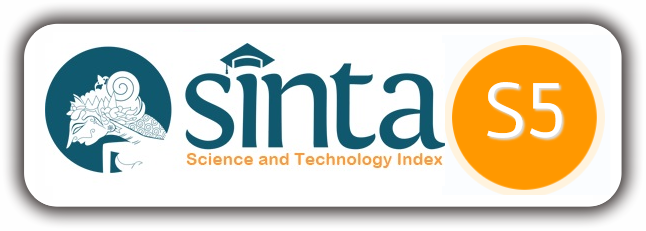Technology Digital Resources Needs for Japanese Grammar Learning
DOI:
https://doi.org/10.51601/ijersc.v5i4.856Abstract
This study aims to determine the need for digital technology resources in Japanese grammar classes through student perceptions. The research method uses qualitative descriptions. This study was conducted at a private university in Jakarta in the even semester of 2023-2024. The participants involved were students who received Japanese grammar classes totalling 70 students. The data collection process used observation, interviews, and documents. Data analysis used the stages of data reduction, data presentation, and concluding. The findings concluded that there are four types of digital technology resources needed by students and the most interview answers were university websites (35.7%) and videos from YouTube (35.7%). Other types are websites for downloading books and learning websites from various educational institutions at home and abroad. Overall, it was found that the existence of digital technology resources has a positive impact on learning Japanese grammar. This is also supported by the ownership of smartphone
Downloads
References
Haleem, M. Javaid, M. A. Qadri, and R. Suman, “Understanding the role of digital technologies in education: A review,” Sustainable Operations and Computers, vol. 3, pp. 275–285, Jan. 2022, doi: 10.1016/J.SUSOC.2022.05.004.
M. Shabudin, A. Aisyah, S. Darus, and N. Mimiko, “Development of Teaching Materials and Utilization of Web 2.0 in Japanese Language Teaching and Learning,” Procedia Soc Behav Sci, vol. 118, pp. 433–441, Mar. 2014, doi: 10.1016/J.SBSPRO.2014.02.059.
S. Bayne, “What’s the matter with ‘technology-enhanced learning’?,” Learn Media Technol, vol. 40, no. 1, pp. 5–20, 2015, doi: 10.1080/17439884.2014.915851.
D. H. Huang, H. E. Chueh, H. Te Huang, H. F. Ho, and C. Y. Kao, “Method of Information Technology Enhanced Japanese Vocabulary Learning and Evaluation,” International Journal of Emerging Technologies in Learning, vol. 16, no. 12, pp. 233–245, 2021, doi: 10.3991/IJET.V16I12.22207.
M. Tian and Y. Sun, “Research on the Application of Computer Aided Multimedia Teaching Technology in Japanese Teaching,” J Phys Conf Ser, vol. 1744, no. 3, Feb. 2021, doi: 10.1088/1742-6596/1744/3/032188.
Y. Li, “Study on the Application of Computer Network Resources in Japanese Teaching,” J Phys Conf Ser, vol. 1992, no. 3, Aug. 2021, doi: 10.1088/1742-6596/1992/3/032071.
H. Reginald, C. Dharma, D. Asmarani, and U. P. Dewi, “ScienceDirect Peer-review under responsibility of the scientific Basic Japanese Grammar and Conversation e-learning through Skype and Zoom Online Application,” Procedia Comput Sci, vol. 116, pp. 13–14, 2017, doi: 10.1016/j.procs.2017.10.055.
T. Trust, “Why Do We Need Technology in Education?,” Journal of Digital Learning in Teacher Education ISSN:, vol. 34, no. 2, pp. 54–55, 2018, doi: 10.1080/21532974.2018.1442073.
Ö. Yılmaz, “The Role of Technology in Modern Science Education,” Eğitimde Güncel Araştırmalar - VI, Dec. 2023, doi: 10.58830/OZGUR.PUB383.C1704.
R. Raja and P. C. Nagasubramani, “Impact of modern technology in education,” Journal of Applied and Advanced Research, pp. S33–S35, May 2018, doi: 10.21839/JAAR.2018.V3IS1.165.
Alaboudi and A. S. Alharbi, “Impact of digital technology on Saudi students,” International Journal of Information Technology (Singapore), vol. 13, no. 3, pp. 943–950, 2021, doi: 10.1007/S41870-020-00451-7.
J. W. Creswell and V. L. P. Clark, “Choosing a mixed methods design,” in Designing and Conducting Mixed Methods Research, California: Sage Publications, Inc., 2011, pp. 53–106.
R. S. Robinson, “Purposive Sampling,” in Encyclopedia of Quality of Life and Well-Being Research, Dordrecht: Springer Netherlands, 2014, pp. 5243–5245. doi: 10.1007/978-94-007-0753-5_2337.
M. Miles, A. Huberman, and J. Saldaña, Sampling: Bounding the collection of data. SAGE, 2014.
Blomgren, “OER awareness and use: The affinity between higher education and K-12,” International Review of Research in Open and Distance Learning, vol. 19, no. 2, pp. 55–70, 2018, doi: 10.19173/IRRODL.V19I2.3431.
R. Meisani, “THE USE OF E-RESOURCES FOR YOUNG LEARNERS ENGLISH TEACHING MATERIALS,” LLT Journal: Journal on Language and Language Teaching, vol. 24, no. 2, pp. 640–649, Oct. 2021, doi: 10.24071/LLT.V24I2.3080.
J. Hilton, “Open educational resources and college textbook choices: a review of research on efficacy and perceptions,” Educational Technology Research and Development, vol. 64, no. 4, pp. 573–590, Aug. 2016, doi: 10.1007/S11423-016-9434-9.
Wiley and J. Hilton, “Defining OER-enabled pedagogy,” International Review of Research in Open and Distance Learning, vol. 19, no. 4, pp. 133–147, 2018, doi: 10.19173/IRRODL.V19I4.3601.
C. Blomgren, “OER awareness and use: The affinity between higher education and K-12,” International Review of Research in Open and Distance Learning, vol. 19, no. 2, pp. 55–70, 2018, doi: 10.19173/IRRODL.V19I2.3431.
J. Ardies, S. De Maeyer, D. Gijbels, and H. van Keulen, “Students attitudes towards technology,” Int J Technol Des Educ, vol. 25, no. 1, pp. 43–65, Feb. 2015, doi: 10.1007/S10798-014-9268-X.
S. Yang and D. Kwok, “A study of students’ attitudes towards using ict in a social constructivist environment,” Australasian Journal of Educational Technology, vol. 33, no. 5, pp. 50–62, 2017, doi: 10.14742/AJET.2890.
S. Ge, C. Hai Leng, and S. M. Baharudin, “The effect of multimedia and temporal contiguity principles on students’ attitude and retention in learning Japanese language,” International Journal of Chinese Education, vol. 11, no. 2, May 2022, doi: 10.1177/2212585X221099964.
M. Larhmaid, “The Impact of Print vs. Digital Resources on Moroccan University Students’ Reading Habits, Uses, and Preferences,” SHS Web of Conferences, vol. 52, p. 02001, 2018, doi:10.1051/SHSCONF/20185202001.
M. Sailer, J. Murböck, and F. Fischer, “Digital learning in schools: What does it take beyond digital technology?,” Teach Teach Educ, vol. 103, p. 103346, 2021, doi: 10.1016/j.tate.2021.103346.
Downloads
Published
How to Cite
Issue
Section
License
Copyright (c) 2024 International Journal of Educational Research & Social Sciences

This work is licensed under a Creative Commons Attribution 4.0 International License.






















